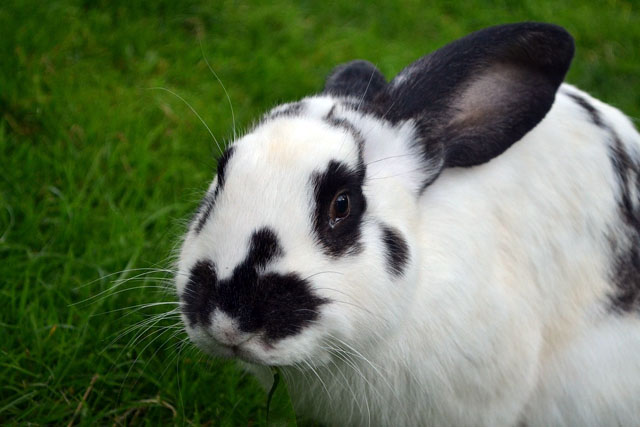



Traditional harnesses are the most common type of harnesses used for rabbits. They consist of a simple strap that goes around the rabbit's neck and another strap that goes around the rabbit's chest. These straps are usually made of nylon or leather and are adjustable to ensure a secure fit. Traditional harnesses are easy to put on and take off, making them a popular choice for rabbit owners.
Vest-style harnesses are another popular option for rabbits. These harnesses are designed like a vest, with straps that go around the rabbit's neck and chest, as well as a strap that goes around the rabbit's belly. The vest-style design provides a more secure fit and distributes the pressure evenly across the rabbit's body. Vest-style harnesses are often made of soft, breathable materials for added comfort.
Figure-8 harnesses are named after their shape, which resembles the number 8. These harnesses have a loop that goes around the rabbit's neck and another loop that goes around the rabbit's chest. The two loops are connected by a strap that runs across the rabbit's back. Figure-8 harnesses are adjustable and provide a secure fit, making them a good choice for rabbits that tend to wiggle out of other types of harnesses.
Adjustable harnesses are designed to fit rabbits of different sizes. These harnesses have multiple points of adjustment, allowing you to customize the fit to your rabbit's specific measurements. Adjustable harnesses are often made of durable materials like nylon or polyester and feature sturdy buckles or clips for added security. These harnesses are a great option if you have multiple rabbits of different sizes or if your rabbit is still growing.
Escape-proof harnesses are specifically designed to prevent rabbits from wiggling out of their harnesses. These harnesses often feature additional straps or loops that go around the rabbit's body, making it nearly impossible for the rabbit to escape. Escape-proof harnesses are ideal for rabbits that are particularly active or prone to escaping. They provide peace of mind for rabbit owners, knowing that their furry friends are secure during outdoor adventures.
When choosing a rabbit harness, it's important to consider the material and durability. Harnesses made of nylon or polyester are common choices, as they are lightweight, durable, and easy to clean. Leather harnesses are also available and are known for their durability and classic look. It's important to choose a harness made of high-quality materials that can withstand the wear and tear of regular use.
Comfort and fit are crucial factors to consider when selecting a rabbit harness. The harness should be snug enough to prevent the rabbit from slipping out, but not too tight that it restricts their movement or causes discomfort. Look for harnesses with adjustable straps to ensure a proper fit. Additionally, choose harnesses made of soft, breathable materials that won't irritate your rabbit's skin.
Safety should be a top priority when choosing a rabbit harness. Look for harnesses that have safety features such as reflective strips or bright colors to increase visibility, especially during low-light conditions. Additionally, some harnesses have a quick-release buckle or clip, allowing for easy removal in case of emergencies. These safety features can help ensure the well-being of your rabbit during outdoor adventures.
Consider the ease of use when selecting a rabbit harness. Some harnesses have simple buckle or clip closures, while others may require more steps to put on and take off. Choose a harness that you feel comfortable using and that your rabbit is comfortable wearing. It's important to practice putting on and taking off the harness before venturing outside to ensure a smooth and stress-free experience for both you and your rabbit.
When choosing a harness for your rabbit, consider their size, activity level, and individual needs. If you have a small or young rabbit, a traditional or vest-style harness may be a good choice. For more active rabbits or those prone to escaping, an escape-proof or figure-8 harness may be more suitable. It's important to measure your rabbit's neck and chest circumference to ensure a proper fit. Additionally, consider the material, durability, comfort, safety features, and ease of use when making your decision.
Remember, introducing a harness to your rabbit may take time and patience. Start by allowing your rabbit to get used to the harness indoors before venturing outside. Always supervise your rabbit while they are wearing a harness and never leave them unattended. With the right harness and proper training, you and your rabbit can enjoy safe and enjoyable outdoor adventures together.
Related posts